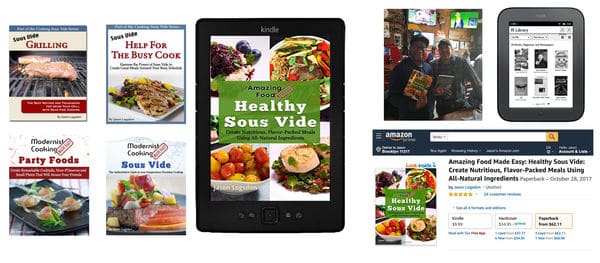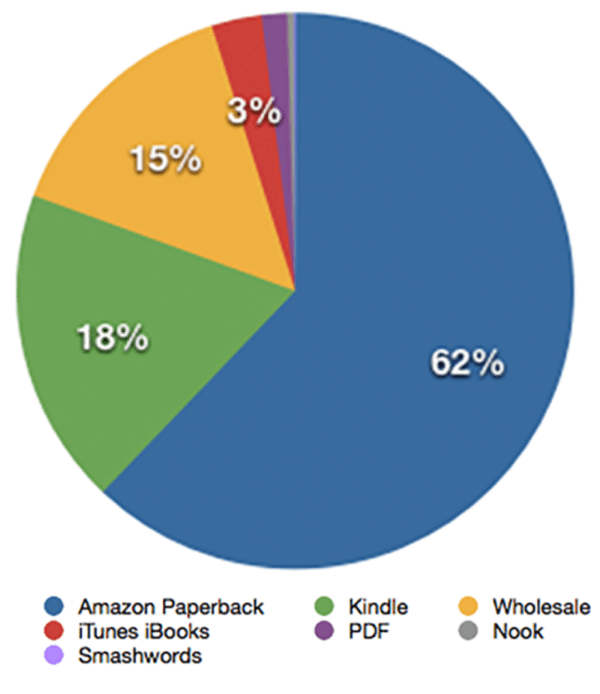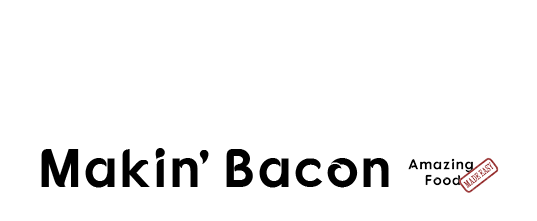 Written by Jason Logsdon
Written by Jason Logsdon
How Do You Actually Publish a Cookbook?
Click to discover how to serve your Fans and grow your incomeWhen bloggers first start thinking about serving their fans by creating products or services, they usually turn to a recipe book or cookbook. These books can be anywhere from 10 pages to 300 pages and can take a ton of different forms, including:
- PDFs on your website
- Printed cookbooks
- Electronic cookbooks on the Kindle or Nook
- Traditionally published cookbooks
- "Magazines" or one-off publications
I've done all of the above except for the magazine (though it's on my to-do list) and they all are a great way to expand your brand and make money. For most of my blogs history, self published cookbooks were my biggest moneymaker.
Like most things, it's easier if you are in a smaller niche that you can dominate. I've tried to condense publishing down to the basics, with a focus on your options and how they can pay off. If you'd like a much more comprehensive look, then I recommend my free Self Publishing Master Course.
Traditionally Published Books
The first option is traditionally published books, and I'm basically going to skip over them, since they are really their own animal. With traditionally published books, the editor or publisher is really your client, and not your readers. It's more similar to making money by taking pictures for someone or copy editing, you are just selling your skills to someone else so they can make a product. There's definitely nothing wrong with that, it's just out of the scope of this article.
I have 1 traditionally published book, 1 semi-traditionally published one, and have been contacted several times by other publishers, but I very much prefer self publishing. It gives you more control over your content, more rights on how to use what you wrote, and it pays a lot better. Plus I don't have to try and convince anyone that I'm worthy, and should be allowed to write a book, I can just write it and sell it to the people who want it.

Self Published Books
Self published books can take any of the forms we discussed, from a 10 page recipe booklet to a full-blown printed cookbook. So there's lots of options, and many ways you can dip your toes in the water without jumping directly into publishing a 300 page book.
I know self publishing sounds very intimidating but there are a ton of companies out there that make the publishing process itself really easy. They will get your book on Amazon, print the book when someone buys it, and ship it to the customer. And you don't have to do anything besides write it, and market it.
That means the hardest part of publishing a book, is actually writing the book. And luckily, as a food blogger you are uniquely positioned to create an amazing book. You have experience writing recipes and developing content, taking food photographs, as well as a built-in audience of fans. And that's a huge part of the process. So don't be intimidated, if you can blog, you can write a cookbook.
Spread Your Content Everywhere
Because writing the book is the hardest part, I prefer to spread my books to as many channels as possible once its written. I write the cookbook, then design and format it to be sold as a PDF from my site, a Kindle / iBook version, and one or two printed versions. This way you are getting your content to your readers in any format they want.
I almost didn't turn my first cookbook (weighing in at a whopping 74 pages) into a printed book because it was so small, but I'm so glad I did. It sold $3,000 worth of copies the first month it was out. So if you have a book in any format, I highly recommend taking the short amount of time to convert it to the other formats. And even if it's less than 50 pages, you can still put out an inexpensive or free Kindle version.
I mean, 80% of my book sales are from printed books. If I would've just stopped at the electronic version, I would have only been making a fraction as much money as I currently am.

Where to Self Publish Your Cookbook
For a look at how the various types of cookbooks can be created and published:
PDF Cookbooks
I sell my PDFs directly from my website using E-junkie, though Gumroad or even just PayPal can work. It costs $5 a month to use E-junkie.
Printed Cookbooks

For my printed books, I've always used a "print on demand" printer. These printers take your book and work directly with Amazon to sell your books. So when a customer buys your book on Amazon, they print it and ship it themselves, and you don't need to do anything, including purchase any upfront inventory. Which is great to minimize your risk.
I use the Amazon KDP (formerly CreateSpace) to produce inexpensive black and white versions of my cookbooks, as well as publish the Kindle versions. This is all free, and there is no inventory to store.
I use IngramSpark to publish more expensive, full color hardcover versions. They cost about $50 to set up your book, but nothing after that. I also use them for their better expanded distribution, though that's usually a minor thing for most self publishers.
Electronic Cookbook Versions
For ebooks, the Kindle, iTunes and Barnes and Noble Press (formerly NOOK Press) all have their own custom admins on their website, all of which are free. And you can also use a service like Smashwords for easy submittal to multiple companies at once, though they do take a small cut of each sale.
So as you can see, there are a lot of companies you can work with to simplify the publishing process and take most of it off your plate. Using the majority of these companies, means you simply write the content, format it in a specific way as a PDF, and fill out a few online forms. And that's all there is to it.
Sales Breakdown

Our general breakdown for our cookbooks was the Kindle accounting for 15%, iTunes for 3%, PDFs for 1.5%, and 0.4% for the Nook. That means that 79% of sales were from printed books. If I would've just stopped at the electronic version, I would have made only a fifth as much money.
Not to mention, about 20% of the sales for printed books, came from wholesaling directly to other companies and equipment manufacturers. Some of which turned into additional content licensing opportunities.
Conclusion: Should You Publish Cookbooks?
Publishing cookbooks has been by far the most lucrative thing I've done. It's a great way to serve your fans and provide them the content they want, in the form they want. It's also an amazing way to expand your brand and grow your audience.
I think publishing a cookbook, whether through self publishing or traditional publishing, is an amazing way to move your blog forward.
Have you published a cookbook? What tips and tricks do you have? Let me know in the Makin Bacon Facebook Group or the comments below.
 Hi, I'm Jason Logsdon! I'm an adventurous home cook and the head writer and photographer for Amazing Food Made Easy. I grew my income to 6-figures by focusing on serving my Fans by providing massive value, and I want to help you do the same.
Hi, I'm Jason Logsdon! I'm an adventurous home cook and the head writer and photographer for Amazing Food Made Easy. I grew my income to 6-figures by focusing on serving my Fans by providing massive value, and I want to help you do the same.














